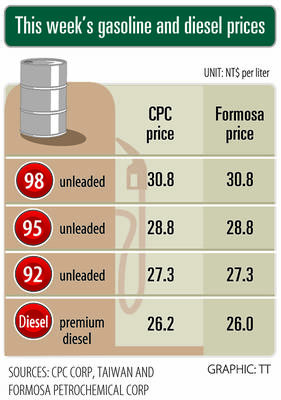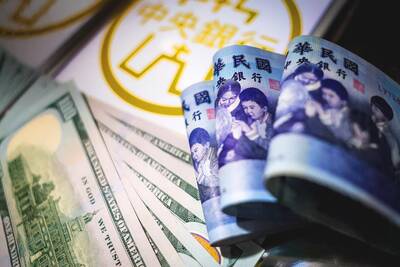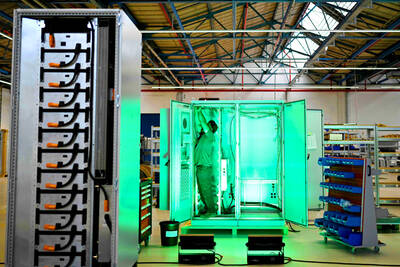Ed Zander is out as Motorola Inc's chief executive after a roller-coaster four years that saw him oversee the cellphone maker's Razr-led resurgence but ultimately bear blame for strategic gaffes and product whiffs that led to its steep decline.
The company's announcement on Friday that Zander was resigning as CEO and that president and chief operating officer Greg Brown will succeed him on Jan. 1 produced little surprise and a muted reaction on Wall Street. Industry experts voiced skepticism the change would produce a turnaround unless accompanied by a new wave of top-selling phones and other mobile devices.
Regardless, the departure will end a wild ride for Motorola under the fast-talking Brooklyn, New York, native, a former Sun Microsystems Inc president who was widely praised for leading the slumping company's resurgence in 2004 and 2005 and castigated for overseeing its slide since the second half of last year.
The two-year run of success following the launch of the ultra-thin Razr phone began crumbling last year after sales slowed and the company admitted it had been trading profit margins for global market share by aggressively undercutting pricing.
In a little more than a year, the Illinois-based company has endured the departure of high-level executives, a Carl Icahn-led proxy battle, a 40 percent drop in its stock price and a sharp decline in its global cellphone market share to 13 percent from more than 20 percent. It slipped from the No. 2 handset maker to No. 3 this year, behind Finland's Nokia Corp and South Korea's Samsung Electronics Co.
The 60-year-old Zander, who will stay on as chairman until the annual shareholders meeting in May, said the decision to go was his alone despite the severe criticism he received for the company's struggles and some calls for his ouster. He said he had initiated talks with the board of directors about his succession months ago and said he had intended all along to stay only about four years.
"This is what I wanted to do," he said in a telephone interview.
"You'd like to leave when you're at the top of your game ... You don't like to leave when you have a year like this with mobile devices," Zander said. "But I think we have enough structurally done with this company that when mobile devices does get back to its execution, we're a stronger company than we were four years ago."
Analysts, however, were dubious the board of directors would have given him the extension he needed to stay on as CEO after he reached the four-year mark at the end of this month. He needed a strong company rebound to assure his standing with directors and shareholders, and progress in the third quarter was only modest.

SETBACK: Apple’s India iPhone push has been disrupted after Foxconn recalled hundreds of Chinese engineers, amid Beijing’s attempts to curb tech transfers Apple Inc assembly partner Hon Hai Precision Industry Co (鴻海精密), also known internationally as Foxconn Technology Group (富士康科技集團), has recalled about 300 Chinese engineers from a factory in India, the latest setback for the iPhone maker’s push to rapidly expand in the country. The extraction of Chinese workers from the factory of Yuzhan Technology (India) Private Ltd, a Hon Hai component unit, in southern Tamil Nadu state, is the second such move in a few months. The company has started flying in Taiwanese engineers to replace staff leaving, people familiar with the matter said, asking not to be named, as the

The prices of gasoline and diesel at domestic fuel stations are to rise NT$0.1 and NT$0.4 per liter this week respectively, after international crude oil prices rose last week, CPC Corp, Taiwan (台灣中油) and Formosa Petrochemical Corp (台塑石化) announced yesterday. Effective today, gasoline prices at CPC and Formosa stations are to rise to NT$27.3, NT$28.8 and NT$30.8 per liter for 92, 95 and 98-octane unleaded gasoline respectively, the companies said in separate statements. The price of premium diesel is to rise to NT$26.2 per liter at CPC stations and NT$26 at Formosa pumps, they said. The announcements came after international crude oil prices

DOLLAR SIGNS: The central bank rejected claims that the NT dollar had appreciated 10 percentage points more than the yen or the won against the greenback The New Taiwan dollar yesterday fell for a sixth day to its weakest level in three months, driven by equity-related outflows and reactions to an economics official’s exchange rate remarks. The NT dollar slid NT$0.197, or 0.65 percent, to close at NT$30.505 per US dollar, central bank data showed. The local currency has depreciated 1.97 percent so far this month, ranking as the weakest performer among Asian currencies. Dealers attributed the retreat to foreign investors wiring capital gains and dividends abroad after taking profit in local shares. They also pointed to reports that Washington might consider taking equity stakes in chipmakers, including Taiwan Semiconductor

A German company is putting used electric vehicle batteries to new use by stacking them into fridge-size units that homes and businesses can use to store their excess solar and wind energy. This week, the company Voltfang — which means “catching volts” — opened its first industrial site in Aachen, Germany, near the Belgian and Dutch borders. With about 100 staff, Voltfang says it is the biggest facility of its kind in Europe in the budding sector of refurbishing lithium-ion batteries. Its CEO David Oudsandji hopes it would help Europe’s biggest economy ween itself off fossil fuels and increasingly rely on climate-friendly renewables. While